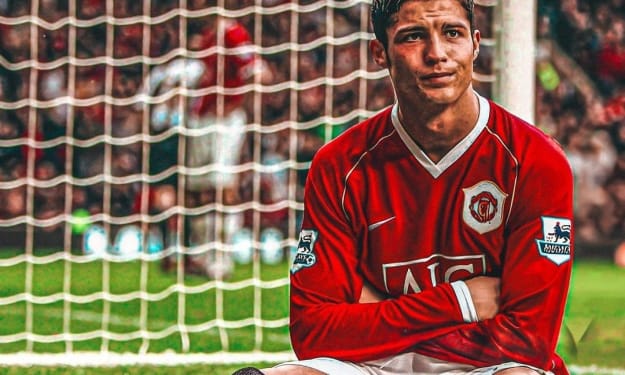What Next for American Soccer?
A Horrible Loss for the United States, and a Catastrophic Setback for the Sport in America

The game of futbol in America took a huge hit in October 2017. The United States Men’s National Team fell to Trinidad and Tobago 2-1, eliminating them from World Cup competition for the first time since 1986. This was more than a horrible loss for the United States; this was a catastrophic setback for the sport here in America. After reaching the round of 16 in the previous World Cup, falling to the eventual champion Germany, the game had finally gained some traction in the mainstream. It was expected that the United States would build upon that momentum, flaunting a new young savant in Christian Pulisic on their way to joining the rest of the world. Instead, they will not compete at all and instead will fall into two years of friendlies and meaningless soccer.
The USMNT squandered a valuable opportunity to build on its momentum from the previous World Cup, and Bruce Arena has stepped down before being removed from his duties for it. The reality with this team is that it has aged since the previous games. Jermaine Jones is in the booth, and Michael Bradley, Tim Howard, and Demarcus Beasley (who is nearing 40) are all four years older. Clint Dempsey is not the prolific striker that he once was and Jose Altidore cannot seem to stay healthy. Bobby Wood looks to be a promising player moving forward as well as Gyasi Zardes, but, as a collective, the squad still has holes to fill. Christian Pulisic as the face of American soccer leaves the United States in good hands, but defensively this team again does not compete at an elite level.
The significance of this loss is in the aftermath. The question becomes, what comes next for American soccer? The fact is that Americans still do not care about soccer in the way that the rest of the world does. It has too many other options for viewership between football, basketball, and baseball. The problem is binary in that just as the viewership has a variety of options, so do children when choosing a sport to play. The best athletes in the United States still do not choose soccer first.
Soccer in America remains a middle to an upper middle-class sport. The visual of Saturday afternoons and soccer moms are a cultural stamp here. On a competitive level, the best athletes are not choosing the sport at a young age. Where you see basketball courts on every corner in every neighborhood in New York City, you see soccer courts on every corner of every favela in Brazil. In Brazil, the sport sends its best athletes every time. That is not the case in the United States. What if Odell Beckham Jr., who was a standout soccer player in high school, had chosen futbol over football? He certainly has the name for it. But an athlete with his ability, running a sub 4.4 40 yard dash and his motor ability, would indeed be useful. Imagine if Lebron James at a young age was introduced to the game. The United States still produces the best athletes across the board, they just aren’t playing soccer.
With all of that, soccer is still not dead in the United States. In 2015, MLS inked a TV deal worth 720 million with ESPN, Fox Sports, and Univision. Viewership continues to rise as MLS continues to expand into newer markets and over 140 countries. You also have the USWNT that remains the most dominant in the world with the eyeballs to match. In 2015, the Women’s World Cup final between the United States and Japan carried 25.4 million viewers making it the most viewed game in United States soccer history. This broke the previous record held by the USMNT against Portugal in the group stages of the 2014 World Cup at 18.7 million viewers. These are things that American soccer can use to build momentum in the 12 to 17-year-old demo. Ages 12 to 17, according to reports, favors soccer over baseball, a sport that 20 years ago was more popular than football. This is the next generation of viewers who will be looking for programming.
Soccer has all the necessary tools to become a legitimate competitor in the United States. The game is relatively easy to follow and affordable to play. You just need a field, a ball, and a goal. Basketball has become a mainstay in American culture. Baseball is a pastime that has seen a decrease in ratings over the past 20 years. And then you have football. Football is a sport that probably should not be played. Football is a collision sport that pits terrific athletes running sub 4.5 forties on a 53 by 100-yard field. A recipe for concussion. With recent discoveries in the science surrounding concussions, it is uncertain how long the sport will be around. Ratings are down in part; people do not watch as much television as they used to. But, also the product the NFL has put on the field of late has not been of the same quality. CTE has cast a dark cloud over the sport causing early retirements and reluctance from parents in deciding to let their children play the sport. Athletes like Lebron James have already decided to keep their kids out of football. This is the perfect time for futbol to gain some ground here in the states.
The sport is undoubtedly growing despite the recent letdown on behalf of the USMNT. What comes next for them both remains to be seen. Despite recent events, there is much to look forward to as American fans of the sport. A young, dynamic footballer in Christian Pulisic and a resurgence in excitement in the sport unseen since the 2002 World Cup. Will futbol ever be a hegemonic power in the American sports landscape? It is unlikely; however, the game can transcend its previous limitations. A grassroots endeavor to attract the 12 to 17 demographic and build on the momentum started by the USWNT as well as the USMNT in the most recent World Cups. Point being, soccer is here to stay in the United States despite a disastrous loss in World Cup Qualifying. That in itself is progress.






Comments
There are no comments for this story
Be the first to respond and start the conversation.